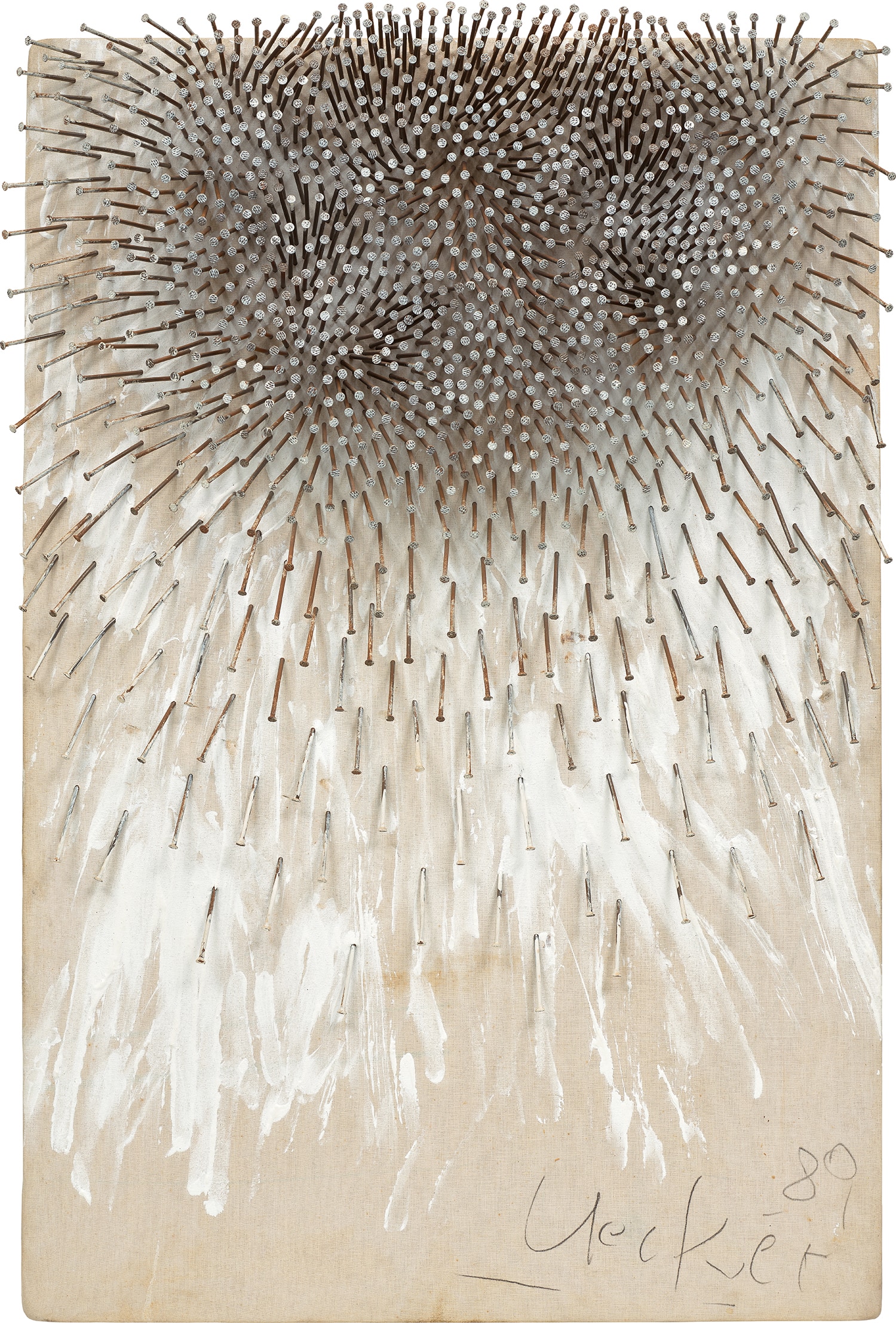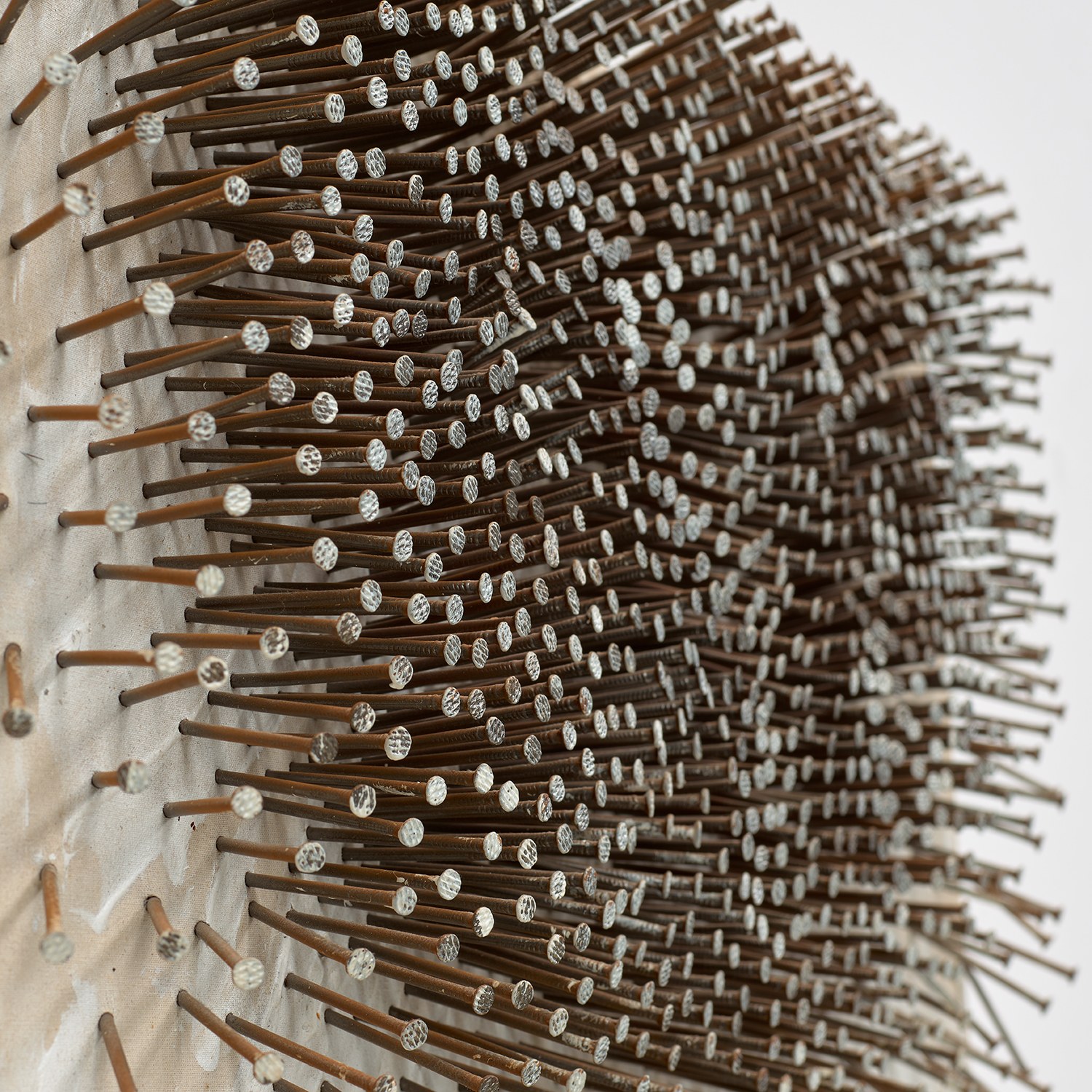





Property of an Important Private Swiss Collection
19
Günther Uecker
Ohne Titel
signed and dated 'Uecker 89' lower right; signed, inscribed and dated 'Uecker 89 Gestiftet am 2.9.1989 für Aktion Kinderherzherzklinik' on the reverse
nails and oil on canvas laid on panel
92 x 61 x 7.3 cm (36 1/4 x 24 x 2 7/8 in.)
Executed in 1989.